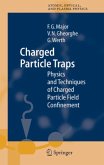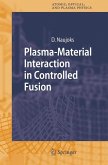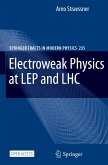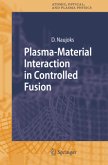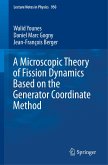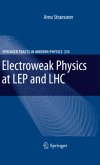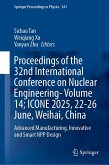This book provides an introduction and guide to modern advances in charged particle (and antiparticle) confinement by electromagnetic fields. Confinement in different trap geometries, the influence of trap imperfections, classical and quantum mechanical description of the trapped particle motion, different methods of ion cooling to low temperatures, and non-neutral plasma properties (including Coulomb crystals) are the main subjects. They form the basis of such applications of charged particle traps as high-resolution optical and microwave spectroscopy, mass spectrometry, atomic clocks, and, potentially, quantum computing.
Over the last quarter of this century, revolutionary advances have been made both in kind and in precision in the application of particle traps to the study of thephysics of charged particles, leading to intensi?ed interest in, and wide proliferation of, this topic. This book is intended as a timely addition to the literature, providing a systematic uni?ed treatment of the subject, from the point of view of the application of these devices to fundamental atomic and particle physics. Thetechniqueofusingelectromagnetic?eldstocon?neandisolateatomic particles in vacuo, rather than by material walls of a container, was initially conceivedbyW.Paulintheformofa3Dversionoftheoriginalrfquadrupole mass ?lter, for which he shared the 1989 Nobel Prize in physics [1], whereas H.G. Dehmelt who also shared the 1989 Nobel Prize [2] saw these devices (including the Penning trap) as a way of isolating electrons and ions, for the purposes of high resolution spectroscopy. These two broad areas of appli- tion have developed more or less independently, each attaining a remarkable degree of sophistication and generating widespread interest and experimental activity.
Over the last quarter of this century, revolutionary advances have been made both in kind and in precision in the application of particle traps to the study of thephysics of charged particles, leading to intensi?ed interest in, and wide proliferation of, this topic. This book is intended as a timely addition to the literature, providing a systematic uni?ed treatment of the subject, from the point of view of the application of these devices to fundamental atomic and particle physics. Thetechniqueofusingelectromagnetic?eldstocon?neandisolateatomic particles in vacuo, rather than by material walls of a container, was initially conceivedbyW.Paulintheformofa3Dversionoftheoriginalrfquadrupole mass ?lter, for which he shared the 1989 Nobel Prize in physics [1], whereas H.G. Dehmelt who also shared the 1989 Nobel Prize [2] saw these devices (including the Penning trap) as a way of isolating electrons and ions, for the purposes of high resolution spectroscopy. These two broad areas of appli- tion have developed more or less independently, each attaining a remarkable degree of sophistication and generating widespread interest and experimental activity.


